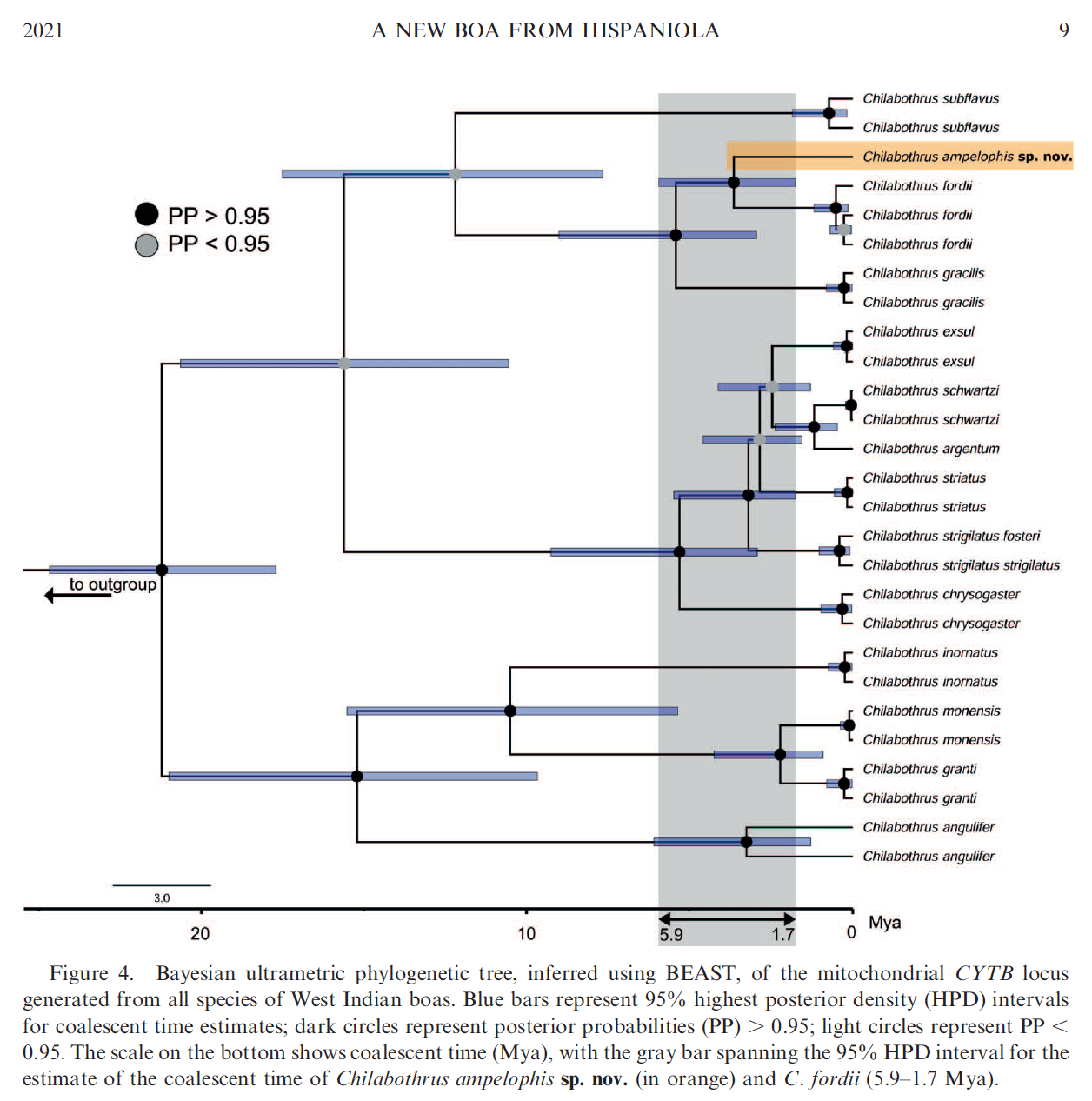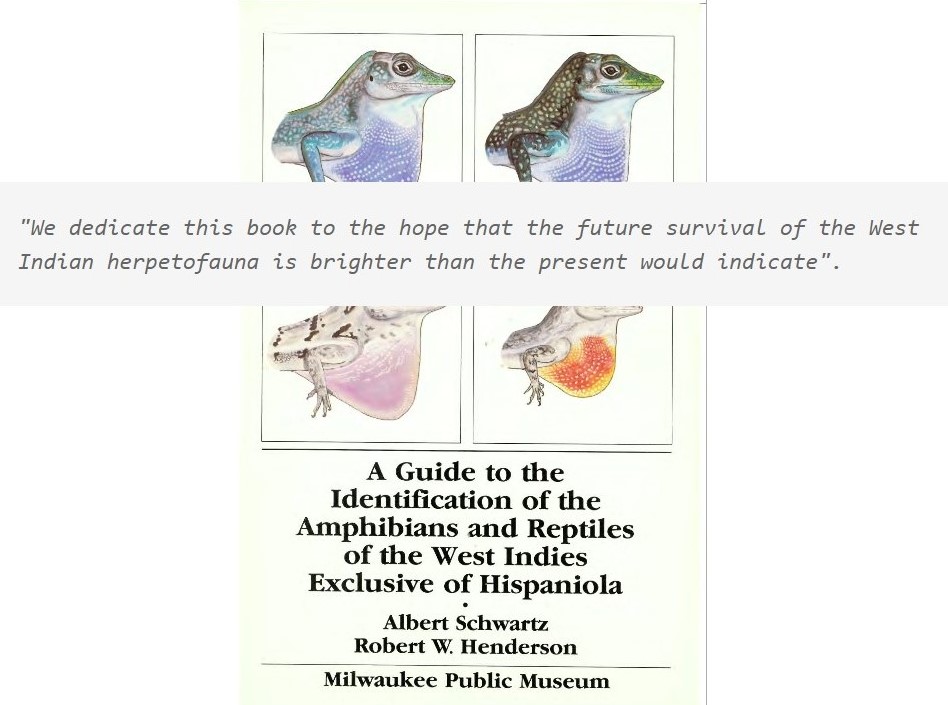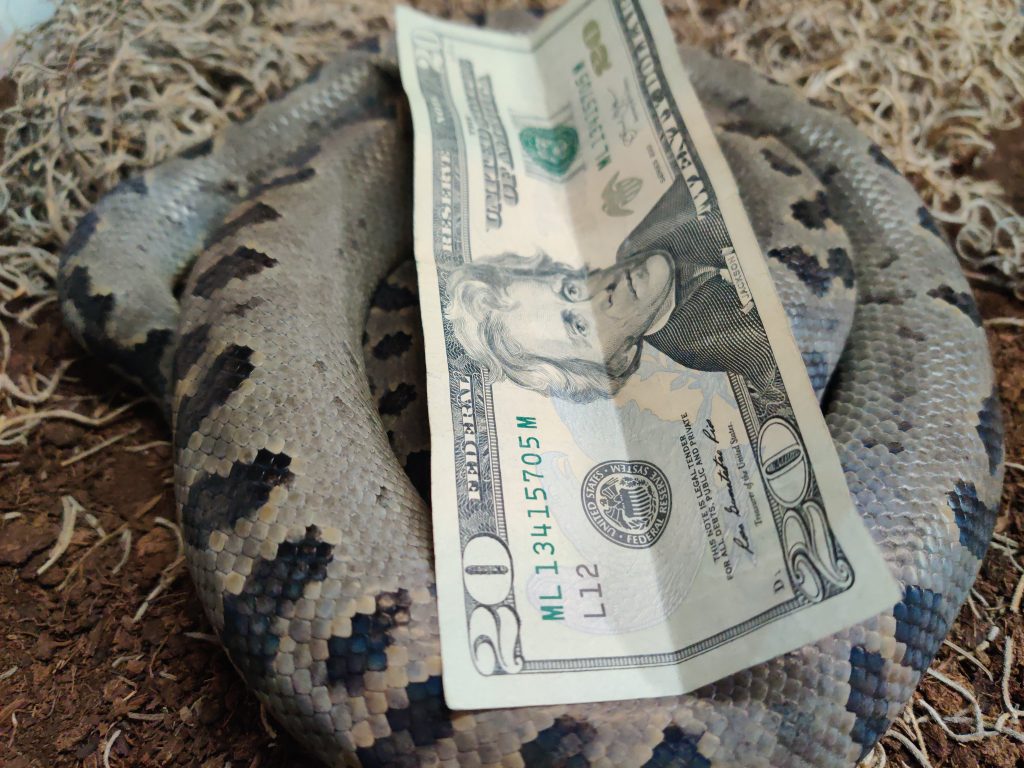A small team of researchers make a unique discovery.
Miguel A. Landestoy T., R. Graham Reynolds and Robert W. Henderson found and described a new species of Chilabothrus on the well studied Island of Hispaniola. They describe the new species as Chilabothrus ampelophis – the Hispaniolan Vineboa – in the Journal Breviora . The boa was discovered on the Barahona Peninsula on the Dominico-Haitian Border in a very small area of less than 10 km2.

The new species Chilabothrus ampelophis differs from C. fordii in body, head, snout shape, scalation, coloration and pattern. It is on the molecular level phylogenetically unique. Morphologically the species appears to fall between C. fordii and C. gracilis, which the researchers consider as a accentuation of the probable ecological differences from its sister species C. fordii.
Interestingly, the researchers found a -as of yet undescribed- Tropidophis species in the same area. This is a reminder of how little we know, even in areas populated by humans and in scientifically well studied regions like the island of Hispaniola. We can only speculate how many species might have gone extinct without us ever knowing of their existence in the intensely altered part of the island on the Haitian side.
The press releases are here and here.
This is a reminder to protect what we know – and what we don’t know.




